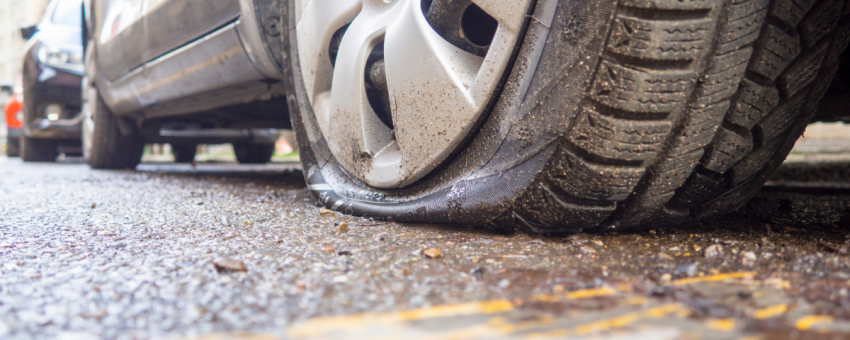If you have a flat tyre, you know the feeling of having absolutely no control over your vehicle. The resulting stress can be the difference between a quick trip and a night spent stranded with no space to spare, no way to drive, and no time to waste. The high-pressure air that a tyre has to withstand undoubtedly presses against the sidewalls, making them wear out faster. And since tyres are the main link between you and the road, they play a critical role in your safety while driving. If you’re the kind of person who simply refuses to accept a flat tyre, then you may want to think about trading it in for something a little more modern.
Cars are an amazing invention, and over the years, we’ve seen them evolve to suit our changing needs. Driving technology has improved over the years, and now cars offer key safety features like automatic emergency braking and the ability to park without a driver. We’ve even gotten remote start systems. But the one thing we’ve never gotten is a spare tyre. That’s about to change. Over the last few years, there’s been a huge trend to make cars smaller and more fuel-efficient, which has prompted the tyre manufacturers to create smaller tyres that fit in the smaller wheel wells. As a result, cars are now offered with optional spares, which are usually smaller and probably less reliable than the standard tyre.
Steps on how to change tires:
• Find a safe area
If you are driving your car and the tyre is flat, you need to find a safe place to park your car, pull over and change the tyre. Before you do so, make sure you have: your car keys, so you can unlock the car, a torch/flashlight/torch-bracelet, so you can see the inside of the car and the floor around the car, a pair of shoes, or other shoes to put on when you get out of the car, and a pair of warm clothes in case you get cold.
• If your car has a flat tyre, and it’s not too cold, you’ll find a way to turn on your hazard lights when pulling over to change it. But if it’s freezing cold, and you can’t get to the garage, don’t forget that you can turn on your hazard lights to attract attention and help you find the closest service garage. This is important because, in the event you do end up getting stuck in a snowdrift or even in mud, a hazard light will also help other drivers know you are in trouble and may push them to assist you.
• Apply the parking brake
The vehicle owner should be able to rely on the parking brake to hold the car firmly in place when parking, rather than relying on the handbrake and the parking brake to do that. The parking brake is a vital safety device when parking, and it should not be overlooked.
• The next thing you should do if you have a flat tyre is to try to find out where the hole in the tyre is located.
• Once you have found out where the hole is located, you need to remove the wheel from the car, which will greatly reduce the damage to your car’s bodywork.
• Tire changing is a fairly common task for most car owners. If your car is equipped with conventional-type wheels, then you should be able to change a tire on your own. However, if you do not know how to, then you should hire a professional. You can find the most appropriate tire service provider by checking online or by asking your friends.
There are several things that can cause a tyre to become flat, and you might be wondering why on earth you need to know about them. The reasons are many and varied, but sometimes you need to know if you’re going to spend your life savings to change it. Changing a flat tire can be one of the most difficult tasks for someone who isn’t sure how to do it. But, it’s not difficult and can be done easily.


